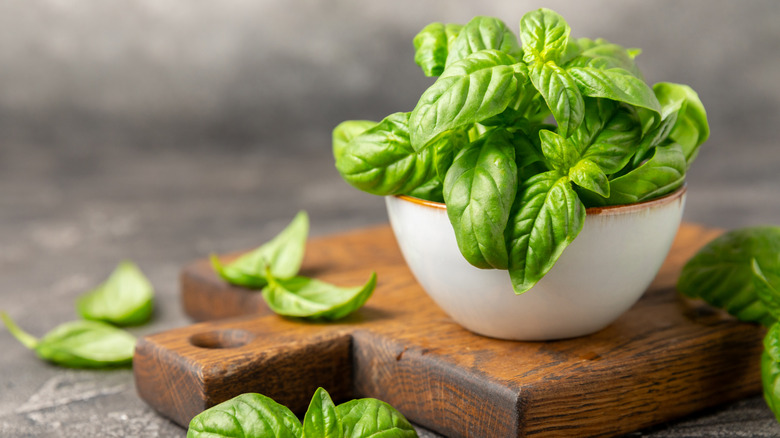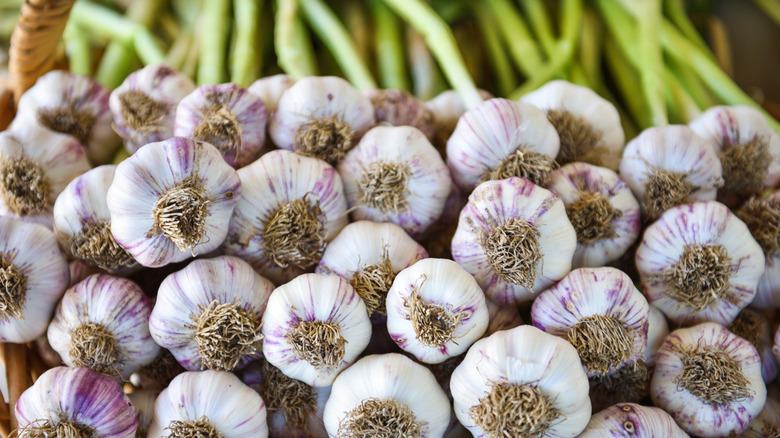Grow Better, More Flavorful Basil With One Simple Garden Addition
Companion planting, the practice of sowing different species of herbs, fruits, and vegetables next to each other, can increase crop production, attract beneficial insects, and deter harmful diseases. Garlic has been a part of the human diet for 5,000 years, and basil has probably been nearly as long. Studies show that adding the oxidant-rich bulb to your menu can protect against ailments like inflammation, heart disease, and cancer. Basil is rich in antioxidants, reduces inflammation, regulates blood sugar, and boosts your immune system. The jury is out on whether garlic (Allium sativum) and basil (Ocimum basilicum) are planted together to enhance each other's flavors. Still, there's no doubt: Many of garlic's other properties benefit basil in the garden.
While horticulturists and amateur gardeners can't agree about whether or not garlic makes basil taste better, the benefits garlic provides mean your basil plants will be healthier. Healthier plants have a better shot at survival and produce a more bountiful, extended harvest. The sulfur compounds in the aromatic cousin of onions and leeks protect against aphids, moths, beetles, and snails in the garden, as well as serve as fungicides. There's evidence that garlic keeps animals like deer and rabbits away from tender plants. However, garlic is not a congenial companion for every plant in your garden. In particular, fennel and garlic aren't a good combination. Planting beans with garlic is another companion planting mistake to avoid.
Growing basil and garlic together
Wait until all danger of frost has passed in the spring before you plant basil seeds or seedlings you've started indoors. The plants thrive in full sun, and a well-drained garden plot and will do better with organic compost worked into the soil. Set the plants 12 to 15 inches apart and water when the soil is dry. Most varieties of basil are hardy in USDA Hardiness Zones 4 through 11, but Thai basil should only be grown in zones 10 through 11. Prune the leaves as you need them for cooking, but don't take more than you need. Fresh basil does not store well. You can dry fresh basil to use later by tying the stems together and hanging the bundles in an area with good air circulation. You can bring potted plants inside to overwinter when it gets cool outside.
New garlic plants, hardy in zones 3 through 8, need nine months to reach maturity, so it's fortuitous that bulbs must be planted between Halloween and Thanksgiving because they will have matured enough to be companions to the basil you plant. Like basil, garlic likes sun and well-drained soil and prefers watering when the soil is dry, or about 1 inch of water a week at the height of the growing season. Bulbs can be planted 3 to 6 inches apart — plan your garden before putting in the garlic so you'll have the right amount of space when it's time to plant the basil. Harvest garlic when the greenery above the soil begins to die back. Once cured by hanging in a cool, dry space for four to six weeks, the whole bulbs can be stored for up to nine months.

